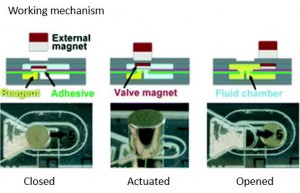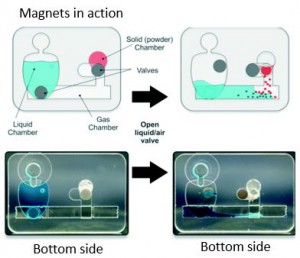You have worked hard all year and wanted to treat yourself with something different for the summer. You decided to arrange a journey to South-Africa to enjoy the beautiful natural scenery. Discovering the range of wildlife in immense national parks, hiking in mountains, and meeting with warm locals made your journey unforgettable. You arrived at one of the best photography spots in a national park just before the sunset. While focussing on capturing the best image from the picturesque scenery, you got bitten by a Marsh mosquito, perhaps infected with a Plasmodium falciparum parasite. This parasite is known for causing malaria, the most significant parasitic disease of humans. You are not the only one: approximately 30,000 travellers from industrialized countries contract malaria each year. During the next 14 days, this parasite will differentiate and proliferate in the body. It will invade and destroy the red blood cells, eventually affecting the liver, spleen, and brain functionality. A few days after the bite, you found a small-scale laboratory for the malaria diagnosis test, but there was a problem: this laboratory can detect malaria only if you have 50-100 parasites per microliter of blood, occurring when the patient carries the parasite for weeks. You, then, had to find a larger laboratory equipped with a benchtop loop-mediated isothermal DNA amplification (LAMP) system, which can detect 1 malaria parasite per microlitre of blood. You wished there was a highly sensitive device for malaria diagnosis at the point of need. Well, we might have some good news for you.
Modern nucleic acid testing methods of malaria detection, such as LAMP, enable high sensitivity, high specificity, robust, and rapid analyses for asymptomatic infections. As performing these methods requires bulky and costly peripheral equipment and trained technicians, access to such equipment in rural areas is unlikely. Fortunately, researchers in Pennsylvania State University recently introduced a stand-alone, portable, and high sensitivity system that can perform “sample-in-answer-out” analyses. The system consists of a compact disc and a reader unit (Figure 1). The compact disc includes valves and microfluidic channels, where the blood sample is processed using magnetic beads. The reader unit can automatically perform all analysis steps including DNA purification, elution, amplification, and real-time detection. For a real demonstration of how the test is performed, the movie included below is well worth the watch. Test results can be displayed on a LCD screen or a smartphone within 40 minutes. The system can detect down to 0.6 parasites per microliter of blood. Each test costs around $1. With these specifications, this technology has the opportunity to create a new paradigm in molecular diagnosis at the point of care.

Figure 1. Schematic view of an assembled compact disc made of PMMA; AnyMDX reading unit consisting of a magnet, heater plate, optical detection system, and LCD screen; and the illustration of integrated sample processing steps on the compact disc. The technique is based on DNA-carrying magnetic beads actuated against stationary reagent droplets.
To download the full article for free* click the link below:
A field-deployable mobile molecular diagnostic system for malaria at the point of need
Gihoon Choi, Daniel Song, Sony Shrestha, Jun Miao, Liwang Cuic and Weihua Guan
Lab Chip, 2016, Articles
DOI: 10.1039/C6LC01078D
Burcu Gumuscu is a postdoctoral fellow in BIOS Lab on a Chip Group at University of Twente in The Netherlands. Her research interests includedevelopment of microfluidic devices for next generation sequencing, compartmentalized organ-on-chip studies, and desalination of water on the microscale.













